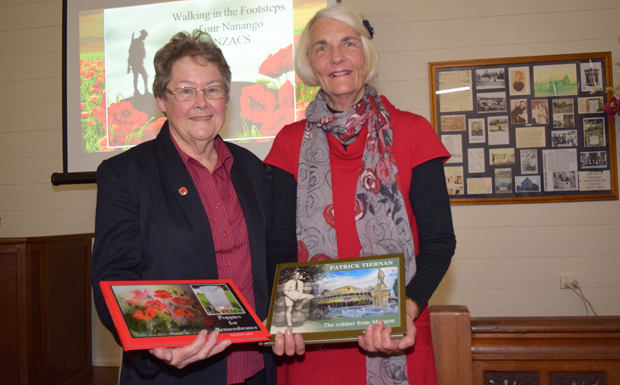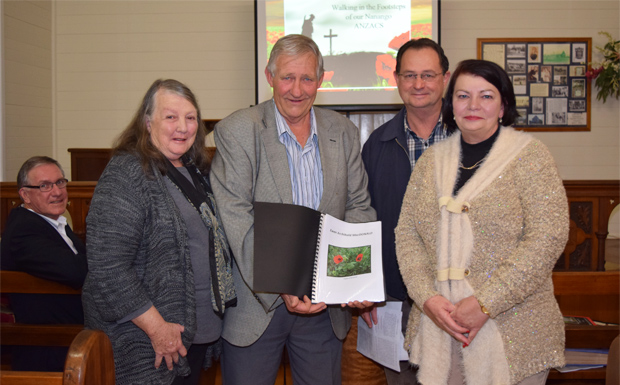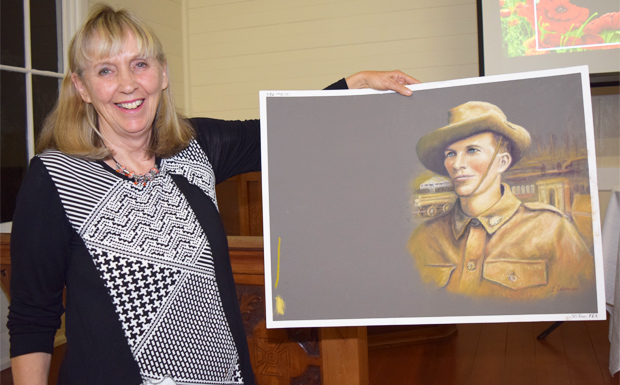
July 29, 2014
The Nanango community kicked off the town’s official World War I centenary commemorations with a special night at Ringsfield on Friday.
The old church building in Ringsfield’s grounds was filled to overflowing for the presentation by Nanango historian Liz Caffery.
Liz said there were more than 400 names on the town’s World War I monument, ie more than 400 people who went to the war; of these, there are 63 names on the “Roll of Honour”, ie. people who did not return …
For the past six years local historians Daun Clapperton and Robyn Peterson have been researching these names, and so far have found details for 57 of them.
These Nanango soldiers died at Gallipoli (8), in France (24), Germany (1), Belgium (20), Palestine (3) and Australia (1).
Liz’s presentation detailed the battles where Nanango men were represented, and the details – if known – of their deaths and burials.
Amongst the Gallipoli fallen was the name of Norman Rushforth, the first Nanango soldier to die in World War I. Rushforth died on April 26, 1915, the day after the Anzac landing.
Other Nanango residents died at Lone Pine.
Two Nanango soldiers, wounded at Gallipoli, were buried at sea: G.F. Craven and P. O’Brien.
The Somme offensive in France claimed 20 Nanango lives while another 20 died in Flanders Fields, ie in battles around Ypres, Passchendaele and Polygon Wood …
There are 12 Nanango names – out of the 6000 Australian names – recorded on the Menin Gate, meaning the details of their burials are unknown. It is likely these men lay somewhere among the 70 per cent of graves marked “unknown soldier” at Tyne Cot cemetery.
Another Nanango man, Hugh Calvert, was captured at Bapaume, on the Somme, but sadly died of illness in a German prisoner-of-war camp in April 1917.
The last recorded Nanango death was that of T.S. Emmerson, who was wounded in France but died on February 22, 1919 – after the Armistice – at a quarantine station in Western Australia.
Liz said a sub-committee of the Nanango RSL had been established to co-ordinate the World War I centenary events over the next four years.
The Nanango Remembrance Committee will aim to ensure there is no duplication of events.
Liz said an Anzac Register was also being gathered together to record current Nanango residents’ family connections with World War I.
- Related article: Trail Of Poppies Leads Back Home

























